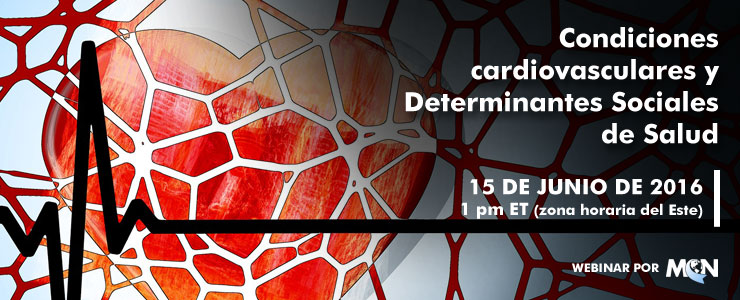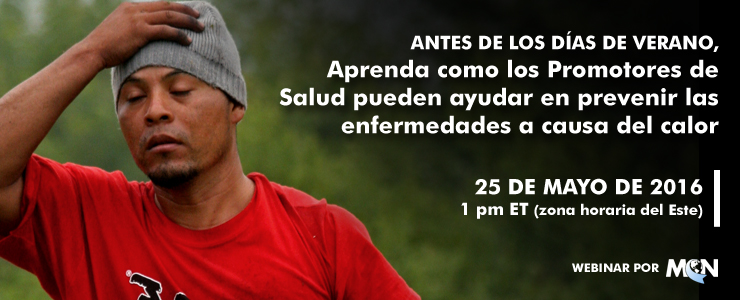Includes EPA manual "How to Comply With the 2015 Revised Worker Protection Standard For Agricultural Pesticides - What Owners and Employers Need To Know" and an excerpt specifically for clininicians regarding medical evaluation and respirator fit test. See also the medical evaluation questions in English and Spanish.
A flier created by the CDC's National Diabetes Education Program as a guide for patients in the management of medicines to treat diabetes. Available in English.
- Diabetes and You - All Medicines Matter.pdf (442.21 KB)
Substance Use Warmline
Peer-to-Peer Consultation and Decision Support
10 am – 6 pm EST Monday - Friday
855-300-3595
Free and confidential consultation for clinicians from the Clinician Consultation Center at San Francisco General Hospital focusing on substance use in primary care
Objectives of the Substance Use Warmline:
- Support primary care providers in managing complex patients with addiction, chronic pain, and behavioral health issues
- Improve the safety of medication regimens to decrease the risk of overdose
- Enhance the treatment, care and support for people living with or at risk for HIV
- Discuss useful strategies for clinicians in managing their patients living with substance use, addiction and chronic pain.
Consultation topics include:
- Assessment and treatment of opioid, alcohol, and other substance use disorders
- Approaches to suspected misuse, abuse, or diversion of prescribed opioids
- Methods to simplify opioid-based pain regimens to reduce risk of misuse and toxicity
- Urine toxicology testing- when to use it and what it means
- Use of buprenorphine and the role of methadone maintenance
- Withdrawal management for opioids, alcohol, and other CNS depressants
- Harm reduction strategies and overdose prevention
- Managing substance use in special populations (pregnancy, HIV, hepatitis)
- Productive ways of discussing (known or suspected) addiction with patients.
The CCC’s multi-disciplinary team of expert physicians, clinical pharmacists and nurses provides consultation to help clinicians manage complex patient needs, medication safety, and a rapidly evolving regulatory environment.
Learn more at http://nccc.ucsf.edu/clinician-consultation/substance-use-management
- CCC Substance Use Warmline Flier EST 7.25.16.pdf (112.12 KB)
This 90-minute webinar was created for physicians, nurses, and other health professionals who treat and case manage patients with active TB. The webinar introduced the 2016 Official American Thoracic Society/Centers for Disease Control and Prevention/Infectious Diseases Society of America Clinical Practice Guidelines: Treatment of Drug-Susceptible Tuberculosis. This training highlighted the guidelines development process, the key changes in recommendations, and discussed the evidence supporting the changes. The webinar was originally presented on November 4, 2016. This training was jointly sponsored by all 5 RTMCCs.
Diabetes HealthSense provides easy access to resources to help you live well and meet your goals—whether you have diabetes or are at risk for the disease. Available in English.
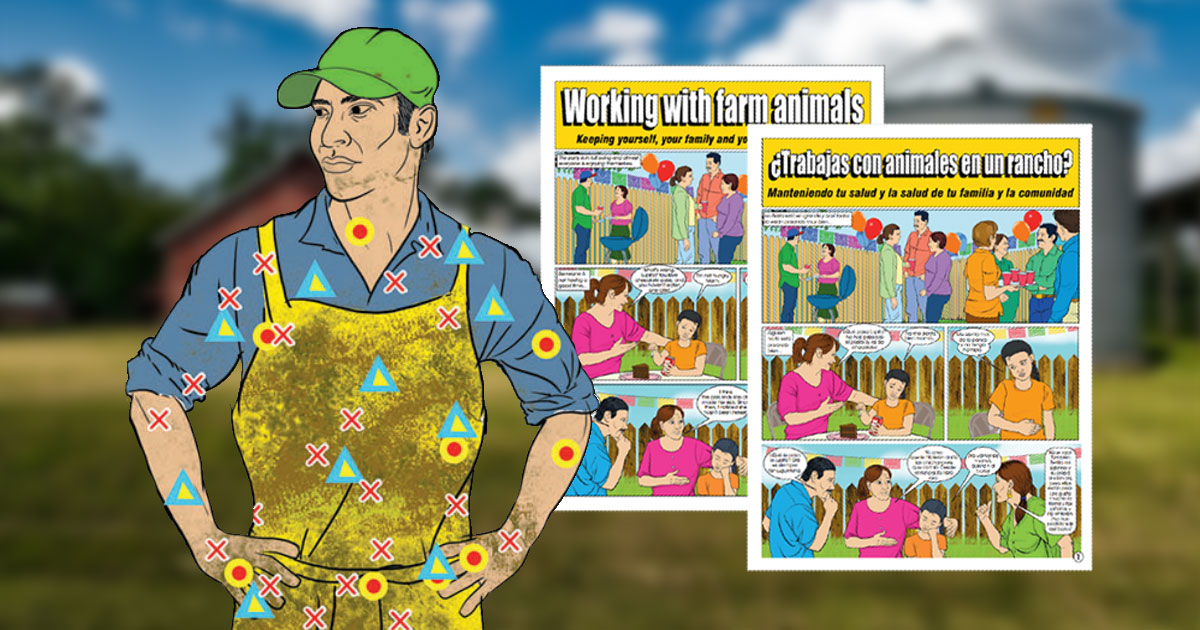
Libro cómic educativo bilingüe sobre cómo prevenir las enfermedades zoonóticas. Desarrollado por MCN en colaboración con la Universidad Estatal de Ohio.
- Working with farm animals_1.pdf (13.33 MB)
- Trabajos con animales en un rancho_1.pdf (13.31 MB)
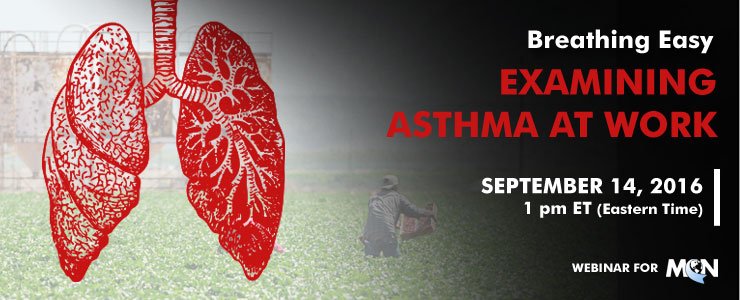
DATE RECORDED: September 14, 2016 at 1 pm ET
PRESENTED BY: Robert Harrison, M.D., M.P.H.
- Recorded Webinar
- Participant Evaluation
- Presentation Slides (PDF)
This material will be produced under grant number SH-27640-15-60-F-48-SH5 from the Occupational Safety and Health Administration, U.S. Department of Labor. It will not necessarily reflect the views or policies of the U.S. Department of Labor, nor does mention of trade names, commercial products, or organizations imply endorsement by the U.S. Government.

DATE RECORDED: September 14, 2016 at 1 pm ET
PRESENTED BY: Robert Harrison, M.D., M.P.H.
This material will be produced under grant number SH-27640-15-60-F-48-SH5 from the Occupational Safety and Health Administration, U.S. Department of Labor. It will not necessarily reflect the views or policies of the U.S. Department of Labor, nor does mention of trade names, commercial products, or organizations imply endorsement by the U.S. Government.
- https://youtu.be/MpNJ-qxL1O0
- http://www.migrantclinician.org/
- https://www.osha.gov/Publications/OSHA3707.pdf
- https://www.thoracic.org/statements/resources/eold/an-official-ats-statement-work-exacerbated-asthma.pdf
- http://journal.publications.chestnet.org/article.aspx?articleid=1044851
- http://www.nj.gov/health/eoh/survweb/wra/documents/asthmagens.pdf
- http://www.ccohs.ca/oshanswers/diseases/asthma.html
- http://www.aoec.org
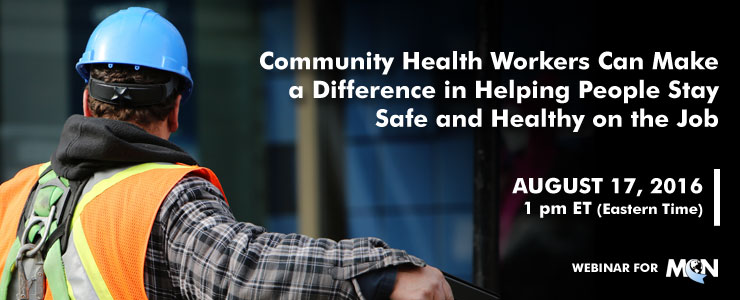
DATE RECORDED: August 17, 2016 at 1 pm ET
PRESENTED BY: Amy Liebman, MPA, MA and Wilson Augustave, member of MCN’s Board of Directors and Senior HIV Case Manager at Finger Lakes Community Health
This material will be produced under grant number SH-27640-15-60-F-48-SH5 from the Occupational Safety and Health Administration, U.S. Department of Labor. It will not necessarily reflect the views or policies of the U.S. Department of Labor, nor does mention of trade names, commercial products, or organizations imply endorsement by the U.S. Government.
- http://migrantclinician.adobeconnect.com/p50hmpih2ti/?OWASP_CSRFTOKEN=3e2b187aeeb1282a41d5df37d8a98c307a7e00006662aca9d5f21dc12aa036c4
- http://www.migrantclinician.org/
- http://workerscomphub.org/
- http://workerscomphub.org/navigating-system
- https://www.osha.gov/workers/index.html
- http://www.coshnetwork.org/know-your-rights
- http://hesperian.org/books-and-resources/
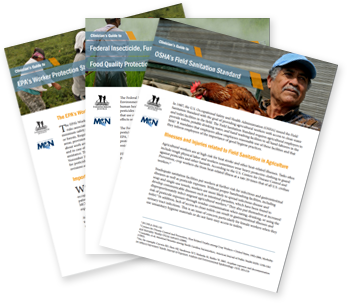
MCN y Farmworker Justice ofrecen estas guías para ayudar a los médicos en la comprensión de regulaciones de salud y seguridad de los campesinos. Información de los Estándares de Saneamiento de la Administración de Seguridad y Salud Ocupacional (OSHA) para los campos; la Ley Federal de Insecticidas, Fungicidas y Rodenticidas (FIFRA) regulado por la Agencia de Protección Ambiental (EPA); la Ley de la Protección de la Calidad de los Alimentos (FQPA) también regulado por el EPA; y el estándar de protección del trabajador (WPS) establecido por el EPA.
- OSHA's Field Sanitation Standard Clinician's Guide.pdf (747.53 KB)
- FIFRA FQPA Clinician's Guide.pdf (287.9 KB)
- WPS Clinician's Guide.pdf (843.35 KB)

MCN and Farmworker Justice offer these guides to assist clinicians in understanding farmworker health and safety regulations. OSHA’s Field Sanitation Standard; EPA's Federal Insecticide, Fungicide, and Rodenticide Act (FIFRA); EPA's Food Quality Protection Act (FQPA); EPA’s Worker Protection Standard (WPS).
- OSHA's Field Sanitation Standard Clinician's Guide.pdf (747.53 KB)
- FIFRA FQPA Clinician's Guide.pdf (287.9 KB)
- WPS Clinician's Guide.pdf (843.35 KB)
A CDC resource page where there is current Zika updates and resources.
A CDC resource page where there is current Zika updates and resources.
Zika virus infection during pregnancy can cause congenital microcephaly and brain abnormalities (1,2). Since 2015, Zika virus has been spreading through much of the World Health Organization’s Region of the Americas, including U.S. territories. Zika virus is spread through the bite of Aedes aegypti or Aedes albopictus mosquitoes, by sex with an infected partner, or from a pregnant woman to her fetus during pregnancy.* CDC estimates that 41 states are in the potential range of Aedes aegypti or Aedes albopictus mosquitoes (3), and on July 29, 2016, the Florida Department of Health identified an area in one neighborhood of Miami where Zika virus infections in multiple persons are being spread by bites of local mosquitoes. Read full article here.
"Zika virus is a flavivirus transmitted primarily by Aedes aegypti and Aedes albopictus mosquitoes, and infection can be asymptomatic or result in an acute febrile illness with rash (1). Zika virus infection during pregnancy is a cause of microcephaly and other severe birth defects (2). Infection has also been associated with Guillain-Barré syndrome (GBS) (3) and severe thrombocytopenia (4,5). In December 2015, the Puerto Rico Department of Health (PRDH) reported the first locally acquired case of Zika virus infection. This report provides an update to the epidemiology of and public health response to ongoing Zika virus transmission in Puerto Rico (6,7). A confirmed case of Zika virus infection is defined as a positive result for Zika virus testing by reverse transcription–polymerase chain reaction (RT-PCR) for Zika virus in a blood or urine specimen. A presumptive case is defined as a positive result by Zika virus immunoglobulin M (IgM) enzyme-linked immunosorbent assay (MAC-ELISA)* and a negative result by dengue virus IgM ELISA, or a positive test result by Zika IgM MAC-ELISA in a pregnant woman. An unspecified flavivirus case is defined as positive or equivocal results for both Zika and dengue virus by IgM ELISA. During November 1, 2015–July 7, 2016, a total of 23,487 persons were evaluated by PRDH and CDC Dengue Branch for Zika virus infection, including asymptomatic pregnant women and persons with signs or symptoms consistent with Zika virus disease or suspected GBS; 5,582 (24%) confirmed and presumptive Zika virus cases were identified. Persons with Zika virus infection were residents of 77 (99%) of Puerto Rico’s 78 municipalities. During 2016, the percentage of positive Zika virus infection cases among symptomatic males and nonpregnant females who were tested increased from 14% in February to 64% in June. Among 9,343 pregnant women tested, 672 had confirmed or presumptive Zika virus infection, including 441 (66%) symptomatic women and 231 (34%) asymptomatic women. One patient died after developing severe thrombocytopenia (4). Evidence of Zika virus infection or recent unspecified flavivirus infection was detected in 21 patients with confirmed GBS. The widespread outbreak and accelerating increase in the number of cases in Puerto Rico warrants intensified vector control and personal protective behaviors to prevent new infections, particularly among pregnant women."

MCN and Farmworker Justice offer these guides to assist clinicians in understanding farmworker health and safety regulations. OSHA’s Field Sanitation Standard; EPA's Federal Insecticide, Fungicide, and Rodenticide Act (FIFRA); EPA's Food Quality Protection Act (FQPA); EPA’s Worker Protection Standard (WPS).
- OSHA's Field Sanitation Standard Clinician's Guide.pdf (747.53 KB)
- FIFRA FQPA Clinician's Guide.pdf (287.9 KB)
- WPS Clinician's Guide.pdf (843.35 KB)
From the 2016 International Union Against Tuberculosis & Lung Disease Conference
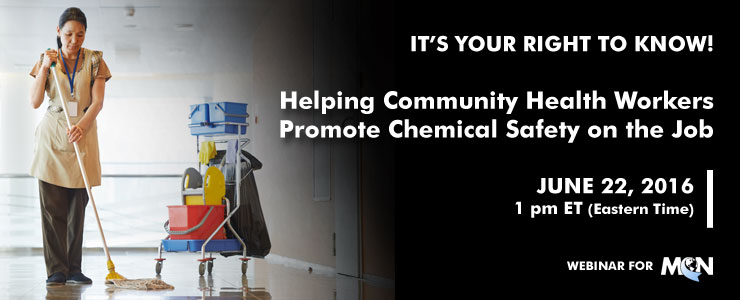
DATE RECORDED: June 22, 2016
PRESENTED BY: Kerry Brennan
This material will be produced under grant number SH-27640-15-60-F-48-SH5 from the Occupational Safety and Health Administration, U.S. Department of Labor. It will not necessarily reflect the views or policies of the U.S. Department of Labor, nor does mention of trade names, commercial products, or organizations imply endorsement by the U.S. Government.

FECHA DE GRABACION: 29 de Junio de 2016
Oradora: Victoria Adela Breckwich Vásquez, DrPH, MPH, MA and Ricardo Garay
- http://migrantclinician.adobeconnect.com/p3ecsy3l2x8/?OWASP_CSRFTOKEN=c25525b1aaee94cd85cf1ee30a1de44f393a11c31d8160d7f04cc9838a5c15bf
- http://www.migrantclinician.org/
- http://depts.washington.edu/pnash/sexual_harassment
- http://www.migrantclinician.org/services/initiatives/family-violence-prevention/hucvf.html

DATE RECORDED: June 15, 2016
PRESENTED BY: Dra. Maura Patricia García Castillo, MD, MPH
- http://www.migrantclinician.org/
- http://www.chegg.com/etextbooks/an-introduction-to-community-public-health-8th-edition-9781449689896-1449689892
- http://ccsdh.ca/publications/results/051a9d49e8044812976859b07cc2507a/
- http://www.phac-aspc.gc.ca/publicat/hpcdp-pspmc/36-2/index-eng.php
- http://www.ncbi.nlm.nih.gov/pubmed/27018728
- http://openheart.bmj.com/content/3/1/e000356.full
- http://nam.edu/wp-content/uploads/2016/05/Numbers-Get-In-the-Way.pdf
- http://www.nap.edu/catalog/21863/food-literacy-how-do-communications-and-marketing-impact-consumer-knowledge
- http://circ.ahajournals.org/content/133/13/1302
- http://www.nap.edu/author/FNB/health-and-medicine-division/food-and-nutrition-board
- https://www.epa.gov/sites/production/files/2016-02/documents/childrens_health_environmental_impacts_and_social_determinants.pdf
FECHA DE GRABACION: 15 de Junio de 2016
Oradora: Dra. Maura Patricia García Castillo, MD, MPH
- http://www.migrantclinician.org/
- http://www.chegg.com/etextbooks/an-introduction-to-community-public-health-8th-edition-9781449689896-1449689892
- http://ccsdh.ca/publications/results/051a9d49e8044812976859b07cc2507a/
- http://www.phac-aspc.gc.ca/publicat/hpcdp-pspmc/36-2/index-eng.php
- http://www.ncbi.nlm.nih.gov/pubmed/27018728
- http://openheart.bmj.com/content/3/1/e000356.full
- http://nam.edu/wp-content/uploads/2016/05/Numbers-Get-In-the-Way.pdf
- http://www.nap.edu/catalog/21863/food-literacy-how-do-communications-and-marketing-impact-consumer-knowledge
- http://circ.ahajournals.org/content/133/13/1302
- http://www.nap.edu/author/FNB/health-and-medicine-division/food-and-nutrition-board
- https://www.epa.gov/sites/production/files/2016-02/documents/childrens_health_environmental_impacts_and_social_determinants.pdf
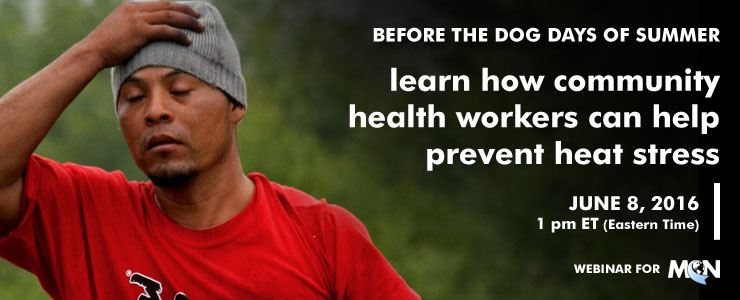
DATE RECORDED: June 8, 2016
PRESENTED BY: Juliana Simmons, MSPH, CHES
This material will be produced under grant number SH-27640-15-60-F-48-SH5 from the Occupational Safety and Health Administration, U.S. Department of Labor. It will not necessarily reflect the views or policies of the U.S. Department of Labor, nor does mention of trade names, commercial products, or organizations imply endorsement by the U.S. Government.
- https://youtu.be/qcCci3GQs04
- http://www.migrantclinician.org/
- https://www.osha.gov/SLTC/heatstress/prevention.html
- http://www.farmworkerjustice.org/sites/default/files/FJpesticidetrainingspanish2016.pdf
- https://www.osha.gov/SLTC/heatstress/index.html
- https://www.osha.gov/SLTC/heatillness/index.html
- https://www.osha.gov/SLTC/heatstress/industry_resources.html
- http://www.dir.ca.gov/dosh/heatIllnessQA.html
- http://www.lni.wa.gov/Safety/Topics/AtoZ/HeatStress/
- http://en.hesperian.org/hhg/Workers%27_Guide_to_Health_and_Safety:Dangers_from_heat
- http://www.naplesnews.com/news/crime/report-farmworkers-death-should-have-been-prevented-2738c212-4e00-109c-e053-0100007fd972-363310521.html
- http://www.cdc.gov/niosh/topics/heatstress/heatrelillness.html
DATE RECORDED: May 25, 2016
PRESENTED BY: Antonio Tovar, PhD
This material will be produced under grant number SH-27640-15-60-F-48-SH5 from the Occupational Safety and Health Administration, U.S. Department of Labor. It will not necessarily reflect the views or policies of the U.S. Department of Labor, nor does mention of trade names, commercial products, or organizations imply endorsement by the U.S. Government.
- http://migrantclinician.adobeconnect.com/p7ivm2ufeen/?OWASP_CSRFTOKEN=ac591cd08f9863f71c6bcfb170562ec542246ffe6bcc46dd96e925e4d31b1e6d
- http://www.migrantclinician.org/
- https://www.osha.gov/SLTC/heatstress/prevention.html
- http://www.farmworkerjustice.org/sites/default/files/FJpesticidetrainingspanish2016.pdf
